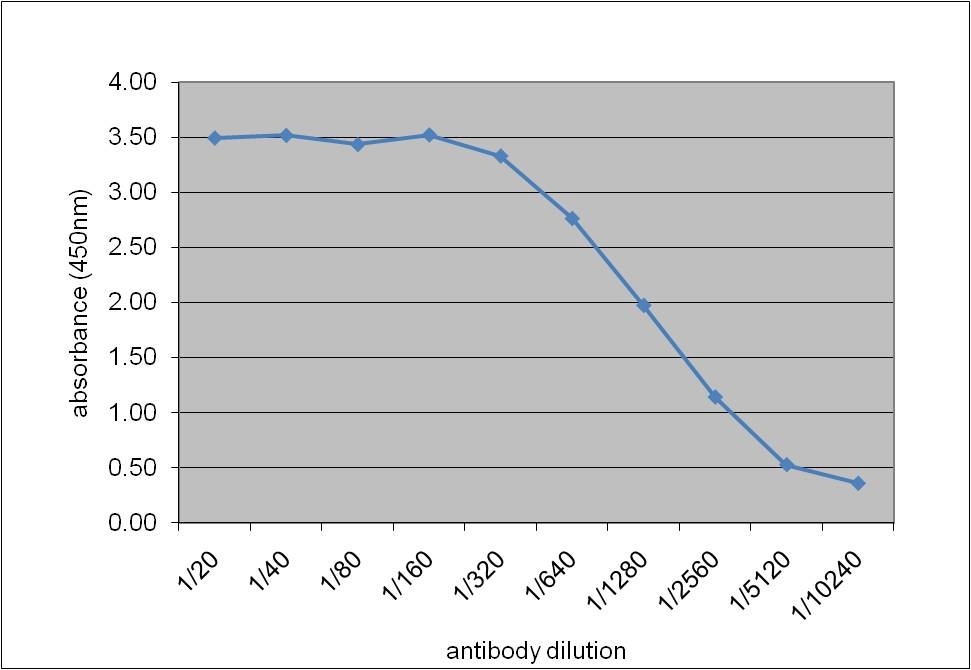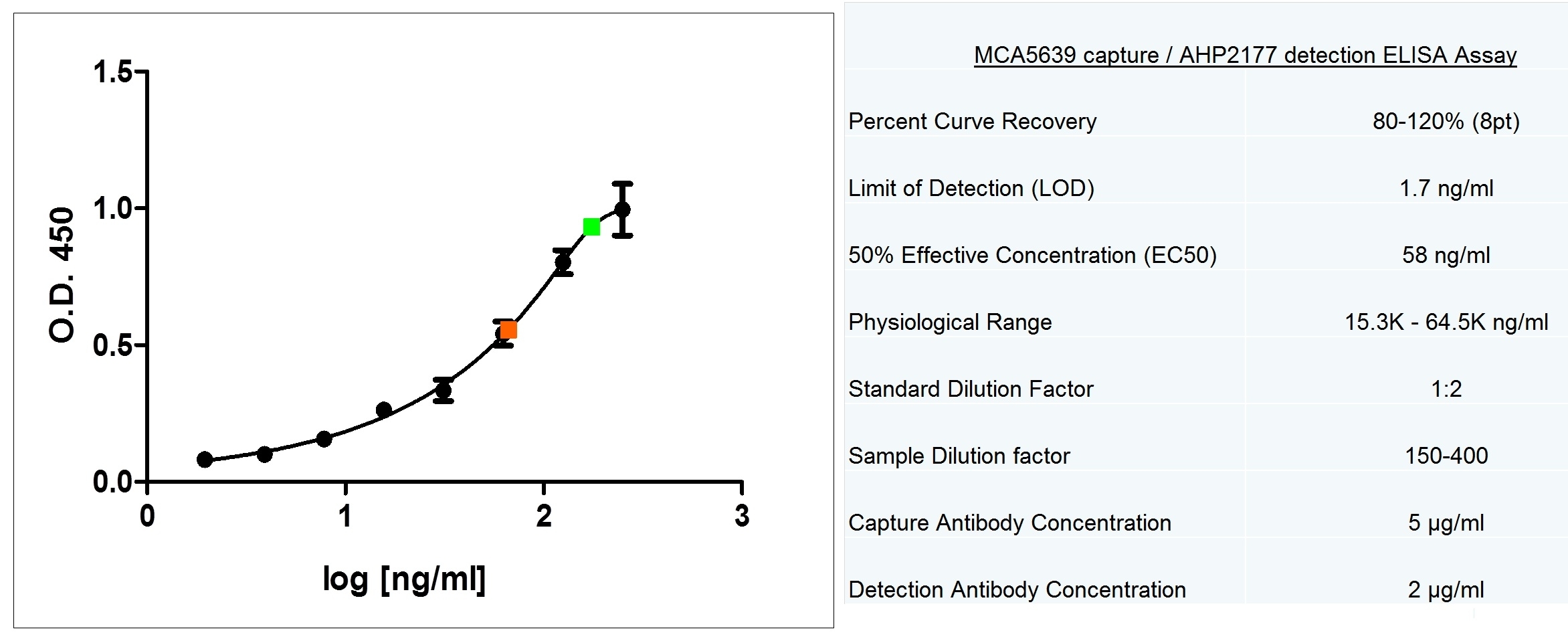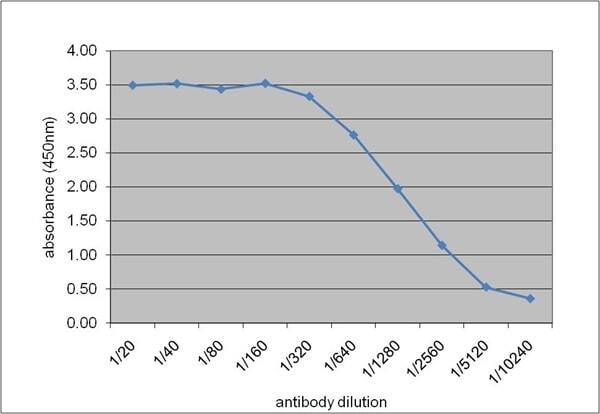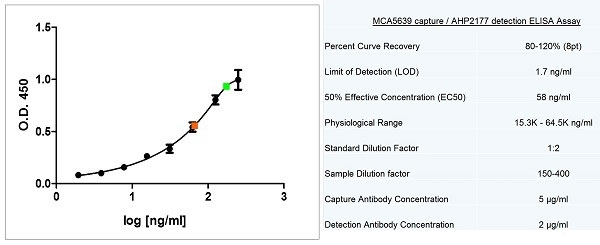Apolipoprotein E antibody | WUE-4





Mouse anti Human Apolipoprotein E
- Product Type
- Monoclonal Antibody
- Clone
- WUE-4
- Isotype
- IgG1
- Specificity
- Apolipoprotein E
| Mouse anti Human Apolipoprotein E antibody, clone WUE-4 recognizes an epitope within amino acids 140-160 of human apolipoprotein E (Apo-E), a major component of very low-density lipoproteins (VLDLs). Apo-E is the principle apolipoprotein in the central nervous system, and is secreted by most organs into the plasma, playing a vital role in the binding, internalization and catabolism of triglyceride-rich lipoprotein constituents. Apo-E acts as a ligand for both the specific apo-E receptor (chylomicron remnant) of hepatic tissues, and the apoB,E (LDL) receptor. Three isoforms of Apo-E have been identified, ApoE2, E3 and E4, and have been linked with various disorders. ApoE2 has been shown to bind LPL receptors with low affinity, resulting in increased plasma cholesterol and triglyceride levels, and thereby an increased risk in cardiovascular disorders. ApoE4 is a high risk factor for Alzheimers disease (Sanan et al. 1994), and in particular late onset Alzheimer disease 2 (AD2), whilst ApoE3 is the most common isoform, and considered the normal/natural Apo-E genotype. Mouse anti Human Apolipoprotein E antibody, clone WUE-4 has been shown to inhibit Apo-E mediated binding of lipoproteins to the apoB,E cell receptor (Krul et al. 1998). |
- Target Species
- Human
- Species Cross-Reactivity
-
Target Species Cross Reactivity Sea Lion Harbour seal Mouse - N.B. Antibody reactivity and working conditions may vary between species.
- Product Form
- Purified IgG - liquid
- Preparation
- MCA5639: Purified IgG prepared by affinity chromatography on Protein A from tissue culture supernatant
- MCA5639GA: Purified IgG prepared by affinity chromatography on Protein G from tissue culture supernatant
- Buffer Solution
- Phosphate buffered saline
- Preservative Stabilisers
- 0.09% Sodium Azide (NaN3)
- Carrier Free
- Yes
- Immunogen
- Purified ApoHDL fraction.
- Approx. Protein Concentrations
- IgG concentration 1.0 mg/ml
- Fusion Partners
- Spleen cells from immunised Balb/c mice were fused with cells of the Sp2/O-Ag14 mouse myeloma cell line.
- Regulatory
- For research purposes only
- Guarantee
- 12 months from date of despatch
Avoid repeated freezing and thawing as this may denature the antibody. Storage in frost-free freezers is not recommended.
| Application Name | Verified | Min Dilution | Max Dilution |
|---|---|---|---|
| ELISA | 1/100 | 1/1000 | |
| Western Blotting |
- Western Blotting
- MCA5639 detects a major band of approximately 34-36kDa in human liver cell lysates.
Source Reference
-
Krul, E.S. et al. (1988) Heterogeneity of apolipoprotein E epitope expression on human lipoproteins: importance for apolipoprotein E function.
J Lipid Res. 29 (10): 1309-25.
References for Apolipoprotein E antibody
-
Davis, R.W. et al. (1991) Lipoproteins in pinnipeds: analysis of a high molecular weight form of apolipoprotein E.
J Lipid Res. 32 (6): 1013-23. -
Fagan, A.M. et al. (2004) ApoAI deficiency results in marked reductions in plasma cholesterol but no alterations in amyloid-beta pathology in a mouse model of Alzheimer's disease-like cerebral amyloidosis.
Am J Pathol. 165: 1413-22. -
Fryer, J.D. et al. (2005) The low density lipoprotein receptor regulates the level of central nervous system human and murine apolipoprotein E but does not modify amyloid plaque pathology in PDAPP mice.
J Biol Chem. 280 (27): 25754-9. -
Wahrle, S.E. et al. (2007) Apolipoprotein E levels in cerebrospinal fluid and the effects of ABCA1 polymorphisms.
Mol Neurodegener. 2: 7. -
Hirsch-Reinshagen, V. et al. (2009) LCAT synthesized by primary astrocytes esterifies cholesterol on glia-derived lipoproteins.
J Lipid Res. 50: 885-93. -
Fan, J. et al. (2011) An ABCA1-independent pathway for recycling a poorly lipidated 8.1 nm apolipoprotein E particle from glia.
J Lipid Res. 52: 1605-16. -
Youmans, K.L. et al. (2011) Amyloid-β42 alters apolipoprotein E solubility in brains of mice with five familial AD mutations.
J Neurosci Methods. 196: 51-9. -
Kim, J. et al. (2012) Anti-apoE immunotherapy inhibits amyloid accumulation in a transgenic mouse model of Aβ amyloidosis.
J Exp Med. 209: 2149-56.
View The Latest Product References
-
Wildsmith KR et al. (2012) In vivo human apolipoprotein E isoform fractional turnover rates in the CNS.
PLoS One. 7 (6): e38013. -
Jiang, J. et al. (2012) Hepatitis C virus attachment mediated by apolipoprotein E binding to cell surface heparan sulfate.
J Virol. 86: 7256-67. -
Lee, C.Y. et al. (2012) Apolipoprotein E promotes β-amyloid trafficking and degradation by modulating microglial cholesterol levels.
J Biol Chem. 287: 2032-44. -
Jiang, J. et al. (2013) Apolipoprotein e mediates attachment of clinical hepatitis C virus to hepatocytes by binding to cell surface heparan sulfate proteoglycan receptors.
PLoS One. 8: e67982. -
Fu,Y. et al. (2016) Apolipoprotein E lipoprotein particles inhibit amyloid-β uptake through cell surface heparan sulphate proteoglycan.
Mol Neurodegener. 11 (1): 37.
- RRID
- AB_10841622
- UniProt
- P02649
- Entrez Gene
- APOE
- GO Terms
- GO:0000302 response to reactive oxygen species
- GO:0001540 beta-amyloid binding
- GO:0001937 negative regulation of endothelial cell proliferation
- GO:0007010 cytoskeleton organization
- GO:0005543 phospholipid binding
- GO:0006641 triglyceride metabolic process
- GO:0006898 receptor-mediated endocytosis
- GO:0006916 anti-apoptosis
- GO:0006917 induction of apoptosis
- View More GO Terms
- GO:0007186 G-protein coupled receptor protein signaling pathway
- GO:0007263 nitric oxide mediated signal transduction
- GO:0007271 synaptic transmission, cholinergic
- GO:0008201 heparin binding
- GO:0008219 cell death
- GO:0010544 negative regulation of platelet activation
- GO:0010873 positive regulation of cholesterol esterification
- GO:0010875 positive regulation of cholesterol efflux
- GO:0016209 antioxidant activity
- GO:0019934 cGMP-mediated signaling
- GO:0030425 dendrite
- GO:0030516 regulation of axon extension
- GO:0030828 positive regulation of cGMP biosynthetic process
- GO:0032488 Cdc42 protein signal transduction
- GO:0032805 positive regulation of low-density lipoprotein particle receptor catabolic process
- GO:0033344 cholesterol efflux
- GO:0033700 phospholipid efflux
- GO:0034361 very-low-density lipoprotein particle
- GO:0034362 low-density lipoprotein particle
- GO:0034363 intermediate-density lipoprotein particle
- GO:0034364 high-density lipoprotein particle
- GO:0034372 very-low-density lipoprotein particle remodeling
- GO:0034375 high-density lipoprotein particle remodeling
- GO:0034380 high-density lipoprotein particle assembly
- GO:0034382 chylomicron remnant clearance
- GO:0034384 high-density lipoprotein particle clearance
- GO:0034447 very-low-density lipoprotein particle clearance
- GO:0046911 metal chelating activity
- GO:0042627 chylomicron
- GO:0042632 cholesterol homeostasis
- GO:0042803 protein homodimerization activity
- GO:0043025 neuronal cell body
- GO:0043407 negative regulation of MAP kinase activity
- GO:0043537 negative regulation of blood vessel endothelial cell migration
- GO:0043691 reverse cholesterol transport
- GO:0045541 negative regulation of cholesterol biosynthetic process
- GO:0046907 intracellular transport
- GO:0046982 protein heterodimerization activity
- GO:0048156 tau protein binding
- GO:0048168 regulation of neuronal synaptic plasticity
- GO:0050728 negative regulation of inflammatory response
- GO:0070326 very-low-density lipoprotein particle receptor binding
- GO:0050750 low-density lipoprotein particle receptor binding
- GO:0051000 positive regulation of nitric-oxide synthase activity
- GO:0051044 positive regulation of membrane protein ectodomain proteolysis
- GO:0060228 phosphatidylcholine-sterol O-acyltransferase activator activity
MCA5639
MCA5639GA
If you cannot find the batch/lot you are looking for please contact our technical support team for assistance.
Please Note: All Products are "FOR RESEARCH PURPOSES ONLY"
View all Anti-Human ProductsAlways be the first to know.
When we launch new products and resources to help you achieve more in the lab.
Yes, sign me up



